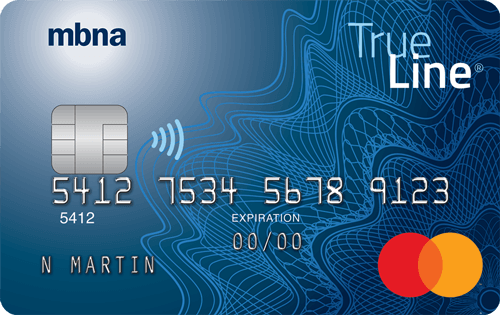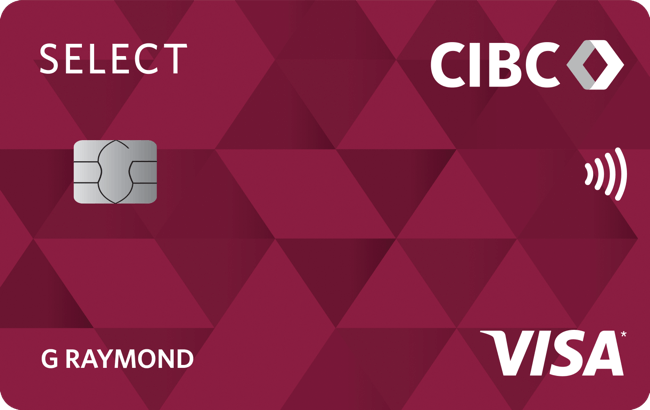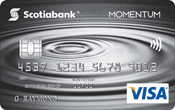A balance transfer credit card can be a powerful tool in paying down your debt—but only if you take advantage of the right card’s promotional period. The best balance transfer credit cards won’t charge interest on debt for a specific period of time and will charge a low transfer fee.
Since credit card terms vary, it’s crucial that you understand what you’re getting into when applying for a new balance transfer card. We’ll highlight the best cards available right now and show you what to watch out for when transferring and repaying your credit card debt.
Best balance transfer credit cards in Canada
We compared Canadians balance transfer credit cards to find the absolute best. Below, you’ll find cards that offer the most competitive balance transfer terms.

MBNA True Line Mastercard credit card

CIBC Select Visa Card

Scotiabank Momentum No-Fee VISA Card
MoneySense is an award-winning magazine, helping Canadians navigate money matters since 1999. Our editorial team of trained journalists works closely with leading personal finance experts in Canada. To help you find the best financial products, we compare the offerings of major institutions, including banks, credit unions and card issuers. Learn more about our advertising and trusted partners.
Gold: MBNA True Line Mastercard
With a 0% balance transfer rate for a full year, the MBNA True Line Mastercard offers a lot of runway to bring down your debt. This card doesn’t charge an annual fee, which is another advantage if you’re working to pay off an existing balance.
MBNA True Line Mastercard
Annual fee: $0
Balance transfer offer: Receive a 0% interest rate for 12 months on balance transfers completed within 90 days. (Offer not available for residents of Quebec.)
Card details
| Interest rates | 12.99% on purchases, 24.99% on cash advances, 17.99% on balance transfers |
| Income required | None specified |
| Credit score | 660 or higher |
Pros
- No annual fee: Get a balance transfer promotion without paying an annual fee—a rarity among balance transfer cards.
- The best balance transfer offer: The 0% promotional rate lasts an entire year, which is the longest offer period of any card on this list, and you have up to 90 days to complete the transfer after opening the account.
- Pay in installments: With MBNA’s Monthly Payment Plan, you can reduce purchase interest on large purchases of $100 or more by breaking payments into smaller chunks over a set period.
- Low interest rates: The regular rates of 17.99% on balance transfers and 12.99% on purchases are much lower than industry standards.
Cons
- High balance transfer fee: The 3% fee ($30 per $1,000 transferred) is higher than the other cards on this list.
- High APR on cash advances: Though its other rates are low, this card charges 24.99% interest on cash advances.
- No rewards: This card doesn’t earn you any rewards on purchases—though you should focus on paying off your balance transfer rather than putting new purchases on the card.
Silver: CIBC Select Visa Card
The CIBC Select Visa Card offers an attractive 13.99% interest rate, even on cash advances, and it has a 10-month balance transfer offer of 0% interest with a 1% balance transfer fee. A handful of other perks round out the package, including common carrier accident insurance and discounts on gas.
CIBC Select Visa
Annual fee: $29 (rebated for the first two years)
Balance transfer offer: Transfer your credit card balance of $100 or more – Get 0% interest for up to 10 months with a 1% transfer fee (BT fee does not apply for Quebec residents) and a two year annual fee rebate.
Card details
| Interest rates | 13.99% on purchases, 13.99% on cash advances, 13.99% on balance transfers |
| Income required | $15,000 per year |
| Credit score | 660 or higher |
Pros
- Low balance transfer fee: The 1% fee ($10 per $1,000 transferred) is the lowest on this list. The transfer fee savings on large balances may be worth the annual fee ($29, rebated for the first two years).
- Low interest rates: The regular APR of 13.99% on purchases, cash advances, and balance transfers is much lower than industry standards.
- Travel accident insurance: You can purchase up to $100,000 in common carrier accident insurance, covering injuries while travelling on planes, cruises, or other common carriers—a rare optional benefit for low-interest cards.
- Gas savings: Link your card with Journie Rewards to save up to 10 cents per litre at participating Pioneer, Ultramar, and Chevron gas stations.
Cons
- Balance transfer limit: The balance you transfer cannot exceed 50% of your total approved credit limit, which may be restrictive for those carrying large balances.
- No rewards: Although this card offers some benefits, you won’t earn rewards on purchases.
Bronze: Scotia Momentum No-Fee Visa
The Scotia Momentum No-Fee Visa also comes with a 0% introductory interest rate on balance transfers. It has a shorter promo period of just six months, but the benefit of no annual fee after your first year could make this card a better choice for some cardholders.
Scotia Momentum No-Fee Visa Card
Annual fee: $0
- 1% cash back at gas stations, grocery stores, drug stores and recurring bills
- 0.5% on everything else
Welcome offer: Earn 5% cash back for the first 3 months (up to $2,000 in total purchases). Plus, pay 0% interest on balance transfers for the first 6 months. Offer ends March 1, 2026.
Card details
| Interest rates | 19.99% on purchases, 22.99% on cash advances, 22.99% on balance transfers |
| Income required | $12,000 per year |
| Credit score | 725 or higher |
Pros
- 0% promo interest rate: Like other top balance transfer cards, this one comes with an introductory interest rate of 0% for six months.
- Cash back rewards: This balance transfer card offers up to 1% cash back on gas, groceries, drugstore purchases, and recurring payments, and 0.5% on everything else.
- Welcome bonus: Get 5% cash back on all purchases (up to $2,000 in spending) in the first three months
Cons
- Shorter balance transfer promo: The promotion is only for six months, which is half of the length of the best available offer.
How we determine the best cards
To select the best balance transfer credit cards, we prioritized a few key factors. First, we considered the promotional APR and the length of the promotion. We also looked at any related transfer fees, along with the annual fee for using the card. The addition of links from affiliate partners has no bearing on the results in this ranking. Read more about the MoneySense selection process and about how MoneySense makes money.
Compare all balance transfer offers
Take a glance at key card details and see for yourself why our picks are the best cards for balance transfers in Canada right now.
| Balance transfer offer | Transfer fee | Annual fee | Regular interest rates | Annual income requirements | Credit score requirements | |
|---|---|---|---|---|---|---|
| MBNA True Line Mastercard | 0% interest for 12 months | 3% of balance transferred | $0 | 12.99% on purchases 24.99% on cash advances 17.99% on balance transfers | None specified | 660 or higher |
| CIBC Select Visa | 0% interest for up to 10 months | 1% of balance transferred | $29 (rebated for the first two years) | 13.99% on purchases 13.99% on cash advances 13.99% on balance transfers | $15,000 | 660 or higher |
| Scotia Momentum No-Fee Visa | 0% interest for 6 months | 2% of balance transferred | $0 | 19.99% on purchases 22.99% on cash advances 22.99% on balance transfers | $12,000 | 660 or higher |
| Scotiabank Value Visa | 0.99% interest for 9 months | 2% of balance transferred | $29 (waived first year) | 13.99% on purchases 13.99% on cash advances 13.99% on balance transfers | $12,000 | 725 or higher |
| BMO Preferred Rate Mastercard | 0.99% interest for 9 months | 2% of balance transferred | $29 | 13.99% on purchases 15.99% on cash advances 15.99% on balance transfers | $15,000 | 660 or higher |
| Tangerine Money-Back Mastercard | 1.95% interest for 6 months | 1% of balance transferred | $0 | 20.95% on purchases 22.95% on cash advances 22.95% on balance transfers | $12,000 | 660 or higher |
Reddit reviews: Are balance transfer credit cards worth it?
Reading card details from the issuers is one thing, but learning about what actual cardholders have to say can be incredibly helpful. We turned to Reddit to see what users had to say about using balance transfer credit cards in Canada.
Here’s a good example of how the MBNA balance transfer credit card helped a couple tackle their wedding debt:
Another important tip, which we alluded to above, is that balance transfer cards are only worth it if you don’t make new purchases on the card:
How balance transfers work
A balance transfer can help you save on interest charges by moving your current credit card balances to a new card with a lower interest rate. Generally, you can’t do a balance transfer to a card by the same issuer (e.g., from one TD card to another TD card).
Let’s say you have a credit card with a balance of $4,000 and a 20.99% annual interest rate. Every month, you make a $400 bill payment. Here’s a comparison between the interest you’d pay if you stuck with that credit card vs. doing a balance transfer to the MBNA True Line Mastercard, which comes with a 0% promotional interest rate for 12 months and a 3% transfer fee.
| Regular credit card | Balance transfer credit card | |
| Initial credit card balance | $4,000 | $4,000 |
| Purchase interest rate | 20.99% | 0% for 1 year |
| Monthly payment | $400 | $400 |
| Balance transfer fee | N/A | $120 (3% of your initial balance) |
| Months required to pay off balance | 12 | 10 |
| Total interest paid over time | $435.20 | $0 |
| Total cost | $435.20 | $120 |
In this case, you’d save $315.20 in interest and pay off your debt two months faster by taking advantage of the True Line’s balance transfer offer.
Don’t forget the balance transfer fee: These range from 1–3% of the total balance you are transferring. If you’re carrying a high balance, the fee might be relatively small compared to the interest you’ll be saving.
How to do a credit card balance transfer
If you think a balance transfer will help you get a handle on your finances, here’s how to get started.
1. Select a card with a favourable rate and terms that meet your needs
Consider the annual fee, promotional rate and term on balance transfers, and other features of the card. Remember: you can only take advantage of balance transfer promos if you’re moving debt from a credit card at one bank to a card at another bank.
2. Apply for the balance transfer credit card
Because promo periods often move quickly, it’s best to have the details of all your current credit card balances ready in advance. Some issuers require full balance transfer information before approving your application, while others collect it afterward. You can apply for your new credit card online or over the phone.
3. Initiate the balance transfer to your new card
You can typically initiate a balance transfer from your new card’s online banking or app. You’ll need to provide the account details, after which you’ll see the details of the transfer—including any applicable balance transfer fee.
4. Create a new repayment plan
Take advantage of the promotional interest-free period to quickly pay down your credit card debt. Set up automatic payments so you don’t miss a due date and trigger an interest rate hike. Remember, the interest rate will jump up once the promo period is over, so plan to pay off your debt in full before that happens.
5. Avoid making purchases on the new card
Any new purchases you make on a balance transfer card will be charged the card’s regular purchase interest rate—not the promotional balance transfer rate. Since your priority is to pay down existing debt, it’s best to avoid using the card for new spending until your old balance is fully paid off.
FAQs
A balance transfer can be a great tool if you are committed to quickly paying down your credit card debt. You might be motivated by the promotional period deadline and the ability to save on interest.
You’ll probably see your credit score drop a few points after applying for a balance transfer credit score, but your score will likely improve in the long run if you significantly pay down your credit card debt.
The catch is that you have a limited window of time to pay down credit card debt with no or low interest. After the card’s promo period ends, the interest rate jumps. You’ll also have to resist the urge to charge new purchases to the card while you’re paying down debt.


